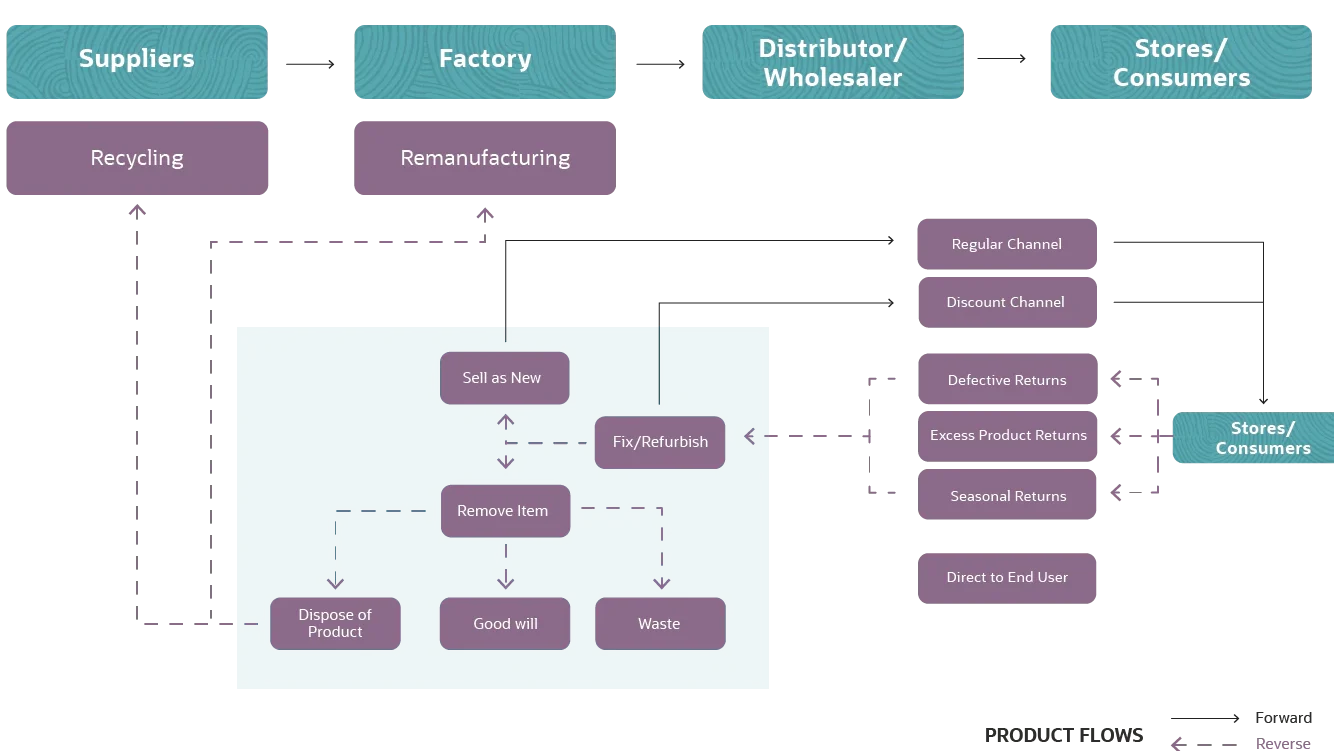Who hasn’t bought online and then returned the product because they didn’t like it or because it wasn’t their size?
Well, I’m part of that group of people, so I was curious to understand how companies handle the pickup of the product that I didn’t like or didn’t fit me.
Definition:
It is a type of supply chain management that moves goods from customers back to the sellers or manufacturers as explained in an article from Oracle’s educational resources. Once a customer receives a product, processes such as returns or recycling require reverse logistics. Remanufacturing and refurbishing can sometimes also be considered under reverse logistics.
Organizations use reverse logistics when goods move from their destination back through the supply chain to the seller and potentially back to the suppliers.
The goal is to regain value from the product or dispose of it. Savvy companies use reverse logistics to build customer loyalty and repeat business and to minimize losses related to returns.
How can companies handle reverse logistics efficiently?
- Put return labels on your products: separate different products by putting your merchandised label on them. This will make your work more convenient and easy to distinguish.
- Separate your product with bins: make segregation for different sections of products and place them in their respective segments according to the labels mentioned above.
- Prioritize your boxes: Separate the products and sort them according to priority.
- Use durable boxes: Try to use thicker cardboard and bubble wraps that are tearproof to keep the product intact and in the proper place.
- Make better collaboration with the retailers for handling reverse logistics: So that you can take quick action during any dispute regarding the product. Having a better relationship helps you deal with the customer better as well.
- Making arrangements for proper transportation and disposal for handling reverse logistics: The boxes must be easily degradable and should not harm the environment in any way.
- Set up better return and refund policies for handling reverse logistics: Make sure that there are proper rules. Otherwise, the process will increase, and the logistics will have to bear the entire expense.
- Focus on the risks: Make sure to carry out every process efficiently and carefully so that you don’t get a return request.
